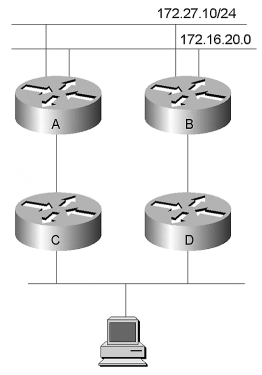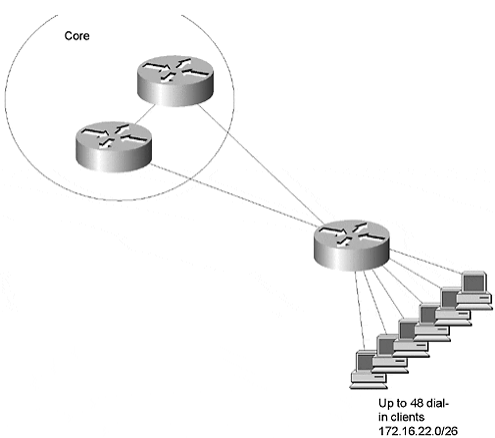CCIE Network Design FAQ: OSPF Network Design
Q1. What parameters must be matched for OSPF routers to become adjacent?
Q2. Is it ever normal for two OSPF routers to reach only a two-way state? When?
Q3. What is a good way to test for MTU mismatches?
Q4. Explain why having a router dial backup beyond the point of summarization is bad.
Q5. What options do you have with a remote dual-homed into two different areas?
Q6. Explain how you can end up throwing packets away if you summarize on Routers A and B in Figure 5-17 to 172.27.0.0/16?
Figure: Diagram for Review Question 6
Q7. Can you have multiple areas with the same area number?
Q8. What one issue must you design around when dealing with dial-in links?
Figure: Dial-In Links and Terminal Server
Q9. Where are external LSAs flooded?
Q10. What type of SPF run is required when the state of external links change?
Q11. How do you inject default routes into OSPF?
Q12. What does the always keyword do on the end of the default-information originate command?
Q13. What is the Forward Address in the OSPF database used for?
Q14. What is the difference between a totally stubby area and a stubby area?
More Resources

